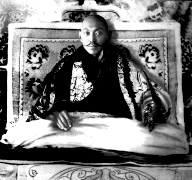
Florida Air Academy
English Department Chair
Additional ActivitiesActivity 1: Throughout the novel, Norbu references Sherlock Holmes stories in his footnotes. This is a list of all the stories mentioned. You can have students read these as additional reading, or assign a story to a particular student or group of students and have them summarize the story for their classmates. Click on the stories to access the full text online.
Activity 2: At first, students may find the inclusion of foreign words in the novel daunting. Norbu includes a glossary of Hindustani, Tibetan, and other foreign terms in the back of his novel, but students may be reluctant to use it. In chapter 2, there is a conversation between Hurree and a hotel sweeper. It includes the following terms:
Choose students who will be responsible for each term and have them look the word up in the glossary. Then, as a class, read the passage aloud, starting with "Get him here for a minute, will you?" and ending with "It was the ferret-face!" As the terms are read out loud, have the student responsible for that term define it for the class. Once you are finished, discuss the effectiveness of including these foreign words in an English novel. Why didn't Norbu use English equivalents? What is the rhetorical purpose of including these exotic terms? Students may balk at having to use the glossary. Take this opportunity to show them that many words can be defined in context. For example, in the passage, Hurree says, "...about a hundred yards ahead of us, an ecca ghari rattled furiously down the dark empty lane." Students should be able to tell that an ecca ghari is some sort of vehicle. There are many instances in the novel that are excellent for using context clues. Take those opportunities to practice with your students. Activity 3: Chapter 7 introduces the Thugs. Students are certainly familiar with the term "thug" in popular culture, but will be unaware that the term is actually a Hindi word appropriated by the English language. Have students research the Thugs (or Thuggee) and explain how our modern use of the word is related to its original meaning. Have students choose other English words from the book and research their origins, or have students research other words in the English language that have their origins in India (such as "bandanna" and "pajamas"). Activity 4: In Chapter 13, Holmes receives a "passport" from the "Grand Lama of Thibet" -- or the Dalai Lama. Students Activity 5: In Chapter 15, Holmes and Hurree pass a funeral party. Hurree comments: "Most probably it was being taken to a cemetery outside the city where it would be disposed of in the rather gruesome but traditional manner by being cut to pieces and fed to vultures and ravens." This tradition is called sky burial, and its description is likely to pique students' interest. Sky burial is not the only funeral custom practiced in Tibet -- there are other practices, such as water burial and cremation. Have students research funeral customs in Tibet. How is the Dalai Lama treated after death? Activity 6: The theft of an artifact called a thangka sets off the final conflict in the novel. A thangka is a wall hanging, usually depicting a deity or, in the case of this novel, a mandala. A fantastic educational resource -- The Mandala Project -- has many activities for students. Take a look!
|
This site was created by Melissa Alton at the NEH Summer Institute "Literatures, Religions, and Arts of the Himalayan Region," held at the College of the Holy Cross, Summer 2011.


 will have heard of the Dalai Lama, but are probably unaware of who he is or his function in Tibetan culture and politics. Students can learn more about the current Dalai Lama by visiting his
will have heard of the Dalai Lama, but are probably unaware of who he is or his function in Tibetan culture and politics. Students can learn more about the current Dalai Lama by visiting his 